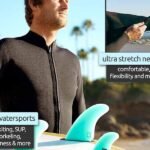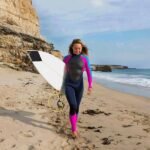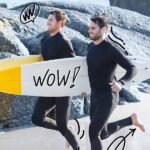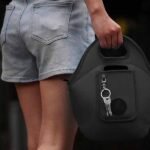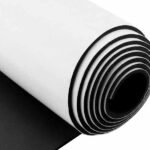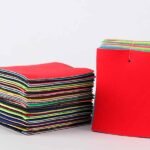Neoprene has revolutionized industries from automotive to sportswear by offering unmatched flexibility, durability, and chemical resistance. But have you ever wondered what goes into crafting this versatile material? As demand for customized, high-performance fabrics surges, understanding the nuances of neoprene production isn’t just academic—it’s a business imperative. In this comprehensive guide, we’ll break down each stage of the manufacturing process, highlighting how Szoneier’s 18+ years of expertise ensure top-tier quality and rapid turnaround.
Neoprene fabric is made by polymerizing chloroprene monomers into polychloroprene, curing it via sulfur or peroxide methods, calendering into sheets, laminating to backings, conducting rigorous quality tests, and finishing with coatings before packaging. Customization ensures tailored performance for diverse applications.
From mixing raw monomers to the final roll-off the production line, every step demands precision—and that’s where Szoneier excels. Let’s kick off with the critical first phase: selecting and sourcing the right raw materials.
What Raw Materials Are Essential for Neoprene Production?
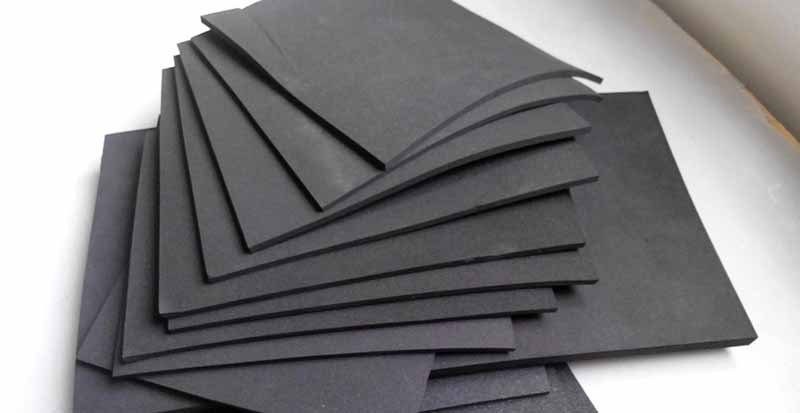
Key raw materials for neoprene include chloroprene monomer, stabilizers, accelerators, fillers, and plasticizers. High-purity inputs directly affect polymer quality, strength, and resistance.
A robust neoprene starts with top-grade chloroprene monomer, typically derived from petroleum or limestone feedstocks. Chloroprene purity above 99% minimizes unwanted side reactions, which can introduce defects or reduce physical performance. Additives—like zinc oxide as an accelerator or magnesium oxide as a stabilizer—fine-tune the polymerization reaction rate and molecular weight distribution.
Fillers such as carbon black improve tensile strength, abrasion resistance, and UV protection. Plasticizers, on the other hand, adjust flexibility and compression set, critical for applications like wetsuits or gaskets. Selecting the right combination requires balancing cost, performance targets, and environmental regulations. For instance, REACH-compliant plasticizers may carry a premium yet appeal to eco-conscious buyers. Szoneier maintains long-term partnerships with certified suppliers across Southeast Asia and Europe, ensuring consistent feedstock quality and competitive pricing.
Furthermore, emerging trends—such as bio-based monomers or recycled polychloroprene blends—are gaining traction. While these alternatives may slightly raise raw material costs by 5–10%, they open doors to sustainable certifications that resonate with green-minded B2B clients. Ultimately, raw material selection sets the stage for every downstream property: thermal stability, chemical resistance, and longevity.
| Raw Material | Function | Typical Range (wt%) |
|---|---|---|
| Chloroprene Monomer | Polymer backbone | 60–70% |
| Zinc Oxide | Cure accelerator | 2–3% |
| Magnesium Oxide | Heat stabilizer | 1–2% |
| Carbon Black | Reinforcement & UV protection | 10–15% |
| Plasticizers | Flexibility adjustment | 5–8% |
How Is Polychloroprene Synthesized via Polymerization?
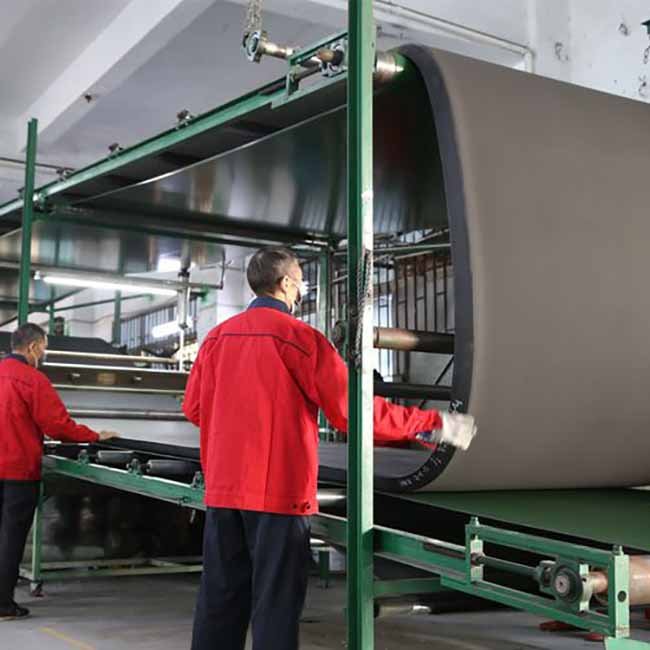
Polychloroprene is produced by emulsion or solution polymerization of chloroprene monomers, using free-radical initiators under controlled temperature and pH to achieve desired molecular weight and polymer properties.
Emulsion Polymerization: This dominant method disperses chloroprene monomers in water with surfactants, creating a latex emulsion. Free-radical initiators (e.g., potassium persulfate) trigger chain reactions at 5–15 °C. Continuous monitoring of pH (around 9–10) and temperature ensures narrow molecular weight distribution, critical for consistent curing behavior and mechanical performance. Emulsion polymerization affords high polymer yields (>95%) and straightforward coagulation to isolate the polychloroprene.
Solution Polymerization: In this technique, chloroprene dissolves in an organic solvent like toluene. Initiators such as azobisisobutyronitrile (AIBN) start the reaction at 60–70 °C. Though more expensive due to solvent recovery requirements, solution polymerization yields latex-free polymer powders, advantageous for specialty formulations with ultra-low residual moisture.
Process Control & Optimization: Achieving target properties requires fine-tuning monomer feed rates, initiator concentration, and mixing shear. Overfeeding initiator can lead to premature chain termination, reducing polymer length and tensile strength. Conversely, insufficient initiation prolongs reaction times, raising energy costs. Szoneier’s advanced reactors integrate real-time online viscometers and spectroscopic sensors, enabling adaptive control loops.
Hybrid approaches—like semi-continuous polymerization—combine the strengths of both methods. By initiating in batch mode then transitioning to continuous feed, manufacturers can optimize throughput without sacrificing quality. For custom orders, Szoneier engineers adjust polymerization parameters to produce grades ranging from high-modulus (membrane applications) to high-elasticity (divers for wetsuits).
Environmental considerations also drive choices: closed-loop water treatment systems reclaim >90% of process effluent, meeting local discharge standards. Solvent recovery units in solution processes recapture >98% of organic media, minimizing VOC emissions and operational costs.
Which Vulcanization and Curing Techniques Are Used?
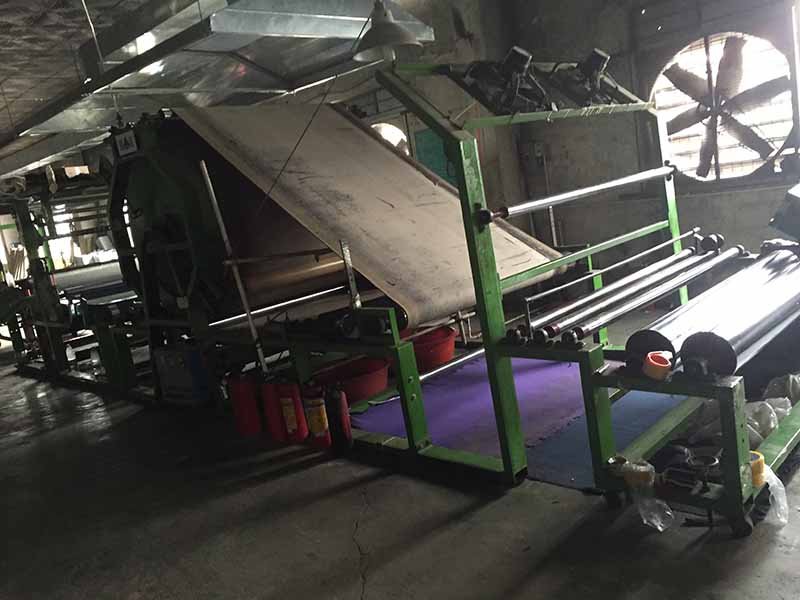
Neoprene is cured using sulfur-based or peroxide-based methods. Sulfur curing yields excellent elasticity; peroxide curing enhances heat resistance. Choice depends on end-use requirements.
Sulfur Vulcanization: The classic approach employs sulfur donors (e.g., sulfur monochloride) alongside accelerators like MBT (mercaptobenzothiazole). Typical cure temperatures range from 150–170 °C over 10–30 minutes. Sulfur crosslinks form polysulfidic bridges, imparting excellent elasticity, resilience, and tear strength. However, over-sulfurization can lead to brittle polymers and poor compression set, making precise accelerator-to-sulfur ratios (commonly 1:2) crucial.
Peroxide Curing: Organic peroxides (e.g., dicumyl peroxide) decompose at higher temperatures (170–190 °C), creating carbon–carbon crosslinks. This method improves thermal stability up to 150 °C and reduces reversion at extended heat exposure. Yet, peroxide-curing can lower elongation at break by 5–10% compared to sulfur-cured grades. For applications like automotive hoses or high-heat gaskets, peroxide grades are often preferred.
Combined Curing: Some formulations integrate both sulfur and peroxide systems, balancing elasticity and heat resistance. The dual network requires careful sequencing—typically starting with peroxide at higher temperatures, followed by sulfur at lower temperatures to refine crosslink structure.
Process Considerations: Cure kinetics hinge on temperature ramp rates, press dwell time, and mold pressure. Uneven heating can create “dead zones” with under-cured polymer, manifesting as weak spots or surface tack. Szoneier’s custom presses feature zoned heating plates and precision hydraulic controls, ensuring isothermal conditions within ±2 °C. This consistency is vital when manufacturing wide neoprene rolls (>2 m) or specialty thicknesses (<0.5 mm). Moreover, post-cure annealing (72 hours at 70 °C) can relieve internal stresses, stabilizing dimensions and optimizing performance under cyclic loading.
Environmental and safety regulations influence curing choices. Sulfur systems emit SO₂ during decomposition, requiring robust ventilation and scrubbers. Peroxide residues demand careful handling to prevent worker exposure. Szoneier adheres to global HSE standards, equipping all curing lines with real-time VOC and gas monitors.
How Do Calendering and Lamination Shape Neoprene Sheets?
Calendering squeezes cured neoprene through heated rollers to achieve uniform thickness, then laminates it to fabric backings (nylon, polyester, knit) using adhesive or co-extrusion for added strength and aesthetics.
Calendering involves feeding vulcanized neoprene into a series of chrome-plated steel rollers heated between 70–100 °C. By adjusting roller gap and speed, manufacturers can produce sheets ranging from 0.3 mm to 5 mm with tolerances of ±0.02 mm. The process also aligns polymer chains, enhancing tensile strength by up to 20% compared to molded slabs.
Following thickness control, lamination bonds neoprene to textile backings. Common substrates include single- or double-face knitted nylon, polyester tricot, and woven fabrics for heavy-duty use. Two main lamination methods exist:
- Adhesive Lamination: A thin layer of solvent-based or water-based adhesive is applied to the fabric or neoprene surface, then pressed under 150–180 °C rollers. This method allows rapid line speeds (>20 m/min) but may introduce residual solvent odors unless fully dried.
- Co-Extrusion Lamination: Melted polymer adhesive layers co-extrude between neoprene and fabric, creating a seamless bond without solvents. While equipment costs are higher, line efficiency and environmental safety improve.
Throughout lamination, tension controls prevent fabric wrinkling or delamination. Szoneier’s multi-zone tension arms and laser-edge-tracking systems maintain alignment within 0.5 mm. Quality checks include peel strength tests (ASTM D1876) to verify >8 N/cm bond strength and visual inspections under magnification to ensure no air pockets or contaminants.
What Standards, Tests, and Certifications Ensure Quality?
Quality is verified through ISO 9001, ASTM D412 tensile tests, compression set measurements, ozone resistance, and chemical resistance assays. Certifications like REACH and RoHS ensure environmental compliance.
To guarantee that every batch of neoprene meets or exceeds application requirements, manufacturers adhere to a suite of international and industry-specific standards:
- ISO 9001 Quality Management: Ensures a robust, documented process control system for raw material sourcing, production, and post-production inspection. By maintaining ISO 9001 certification, Szoneier demonstrates consistent quality processes across its 20-line production facility.
- ASTM D412 Tensile and Elongation Testing: Measures tensile strength, elongation at break, and modulus. Neoprene grades for heavy-duty industrial uses typically require tensile strengths above 7 MPa and elongation at break over 400%. Lower-strength grades (≥4 MPa) suffice for lighter applications like apparel.
- ASTM D395 Compression Set: Evaluates the material’s ability to recover thickness after prolonged compressive stress. Premium gaskets or sealants often demand compression set values under 20% after 22 hours at 70 °C.
- Ozone Resistance (ASTM D1149): Assesses cracking under ozone exposure at 20 pphm for 48 hours. Neoprene’s natural resistance to cracking at stresses up to 20% elongation makes it ideal for outdoor and automotive components.
- Chemical Resistance (ASTM D471): Tests weight change and volume swell after immersion in oils, fuels, and solvents. Standard neoprene grades limit volume swell to under 25% in ASTM #3 oil at 70 °C for 70 hours.
- Environmental Compliance—REACH & RoHS: Certifies that harmful substances (e.g., heavy metals, phthalates) remain below regulated thresholds. For European and North American markets, Szoneier regularly audits raw material suppliers to uphold compliance.
Through systematic sampling and statistical process control, Szoneier achieves >98% first-pass yield, minimizing rework and accelerating delivery.
Are There Eco‑Friendly or Specialty Neoprene Options?
Eco-friendly neoprene uses limestone-based monomers or recycled polychloroprene blends. Specialty options include flame-retardant, anti-microbial, and conductive neoprene, catering to niche applications.
The shift toward sustainability has catalyzed development of chlorine-free or bio-based neoprene. Limestone-derived chloroprene, pioneered in the early 2000s, reduces CO₂ emissions by up to 63% compared to petrochemical routes. While production costs may increase by 10–15%, B2B clients often accept premium pricing for green credentials—especially in European automotive or medical sectors.
Recycled neoprene, sourced from post-industrial scrap or fishing nets, offers another circular-economy pathway. Incorporating up to 20% recycled content can reduce raw material costs by 5% while enhancing brand sustainability narratives. Szoneier provides Life Cycle Assessment (LCA) reports for custom grades, enabling clients to quantify carbon footprints and earn eco-labels.
Specialty variants serve unique performance needs:
- Flame-Retardant Neoprene: Infused with brominated or phosphorus-based additives, achieving UL 94 V-0 ratings.
- Anti-Microbial Neoprene: Treated with silver-ion or quaternary ammonium compounds, ideal for medical supports and sportswear.
- Electrically Conductive Neoprene: Filled with carbon nanotubes or metal flakes for EMI shielding in electronics.
Customization extends to color, texture, and durometer (shore A hardness from 20–90), ensuring the right balance of softness and rigidity.
Which Finishing Processes Enhance Performance and Aesthetics?
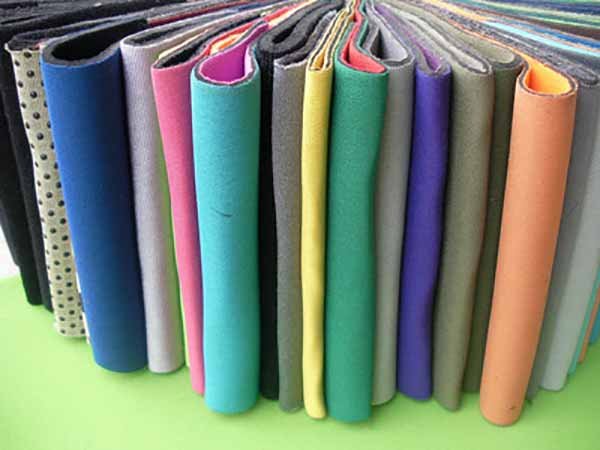
Surface finishes like coating, embossing, and printing enhance durability and design. Functional treatments include water-repellent, UV-stabilizing, and anti-slip coatings to meet application demands.
Finishing transforms a functional substrate into a market-ready material that captures end-user appeal:
- Surface Coating: Polyurethane or silicone coatings impart abrasion resistance and low friction. For gear and apparel, PU coatings can boost wear life by 50%.
- Embossing and Texturing: Roller or calendar embossing creates patterns (e.g., hexagonal grip, diamond tread) to improve grip, drainage, or visual interest. Embossed depths range from 0.1–0.5 mm without compromising laminate integrity.
- Digital and Rotary Printing: High-definition printing enables brand logos, camouflage patterns, or alignment guides. UV-curable inks bond seamlessly, resisting over 1,000 wash cycles in textile-backed neoprene.
- Functional Treatments:
- Water-Repellent: DWR finishes (e.g., C0 chemistries) shed water and oils, essential for marine or outdoor applications.
- UV Stabilizers: Hindered amine light stabilizers (HALS) reduce yellowing under UV, extending life by up to 30% in outdoor installations.
- Anti-Slip: Micro-silica or ceramic bead coatings enhance tack, crucial for knee pads and ergonomic handles.
Each finish requires compatibility testing with base neoprene grades and laminates to ensure adhesion and function. Szoneier’s pilot lab conducts accelerated weathering (500+ hours) and wash tests to validate performance before scaling to production.
How Is Neoprene Fabric Packaged and Delivered to Clients?
Neoprene rolls are packaged on cores, wrapped in moisture-barrier film, and boxed on pallets. Sample cuttings accompany bulk shipments, with logistics optimized for lead times under 15 days.
Packaging begins by slitting large calendered rolls into client-specified widths (commonly 1–2 meters). Rolls are wound on sturdy cardboard or plastic cores, then sealed in laminated polyethylene film with desiccant packs to guard against moisture and oxidation. Labels detail batch numbers, grade specifications, and certification references.
For bulk orders, rolls are palletized (up to 1.2 tons per pallet) and stretch-wrapped. Optimal stacking minimizes compression damage and streamlines container loading. Szoneier’s export team coordinates with logistics providers for door-to-door delivery, typically achieving 15-day lead times to North America and Europe.
Sample management ensures rapid prototyping: digital-order portals allow clients to request free 0.5 m² cuttings, delivered within 3 days. All sample sheets are die-cut with edge markings indicating durometer and reinforcement type.
Quality at delivery is verified via pre-shipment inspections, including dimensional checks, visual audits, and third-party lab testing on request. This thorough approach underpins Szoneier’s 99% on-time delivery record and fosters trust among global B2B partners.
Conclusion
Understanding the intricate journey from monomer to finished neoprene fabric empowers industrial buyers to make informed sourcing decisions. At Szoneier, we combine decades of expertise with cutting-edge technology to deliver custom neoprene solutions that exceed performance expectations. Whether you need specialty formulations, eco-friendly grades, or precise laminates, our team is ready to partner with you.
Ready to customize your neoprene fabric? Contact Szoneier today for free samples, detailed quotes, and expert guidance. Let’s bring your next project to life.


